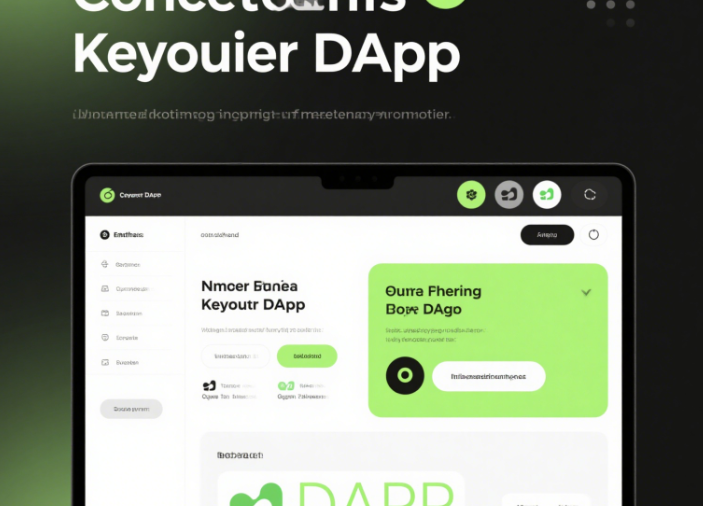In an era dominated by centralized platforms, decentralized applications (dApps) are reshaping industries by leveraging blockchain technology to offer transparency, security, and user control. As the demand for decentralized solutions surges, understanding dApps’ core principles, technical foundations, and real-world applications is crucial for businesses and developers alike. This comprehensive guide explores the inner workings of dApps, their transformative potential, and the challenges they face, while highlighting Bitora’s role in keeping you informed about the latest dApp trends.
What Is a dApp? The Building Blocks of Decentralization
A decentralized application (dApp) operates on a blockchain or peer-to-peer network, eliminating reliance on centralized servers. Unlike traditional apps, dApps are governed by smart contracts—self-executing code that enforces rules without intermediaries. Key characteristics include:
- Decentralization: Data and operations are distributed across nodes, reducing single points of failure.
- Transparency: All transactions are visible on the blockchain, fostering trust.
- Security: Cryptographic hashing ensures data immutability, protecting against tampering.
- Tokenization: Many dApps use tokens to incentivize participation and enable governance.
For example, DeFi platforms like Aave and Uniswap rely on dApps to facilitate decentralized lending and trading, while NFT marketplaces like OpenSea use smart contracts to authenticate digital assets.
The Technology Behind dApps: Blockchain and Smart Contracts
dApps thrive on blockchain networks such as Ethereum, Solana, and Polygon, which provide the infrastructure for decentralized computing. Smart contracts, written in languages like Solidity or Rust, automate processes by executing predefined conditions. Here’s how it works:
- Blockchain as a Foundation: The network stores data and validates transactions through consensus mechanisms (e.g., Proof of Stake).
- Front-End Integration: User interfaces (UIs) connect to blockchain nodes via Web3.js or WalletConnect.
- Token Economics: Tokens fuel dApp ecosystems, rewarding users for contributing resources or participating in governance.
Recent advancements in layer-2 scaling solutions (e.g., Optimism, Arbitrum) and cross-chain interoperability protocols (e.g., Chainlink CCIP) have addressed Ethereum’s scalability issues, enabling dApps to handle millions of transactions efficiently .
Why dApps Matter: Advantages Over Traditional Apps
dApps offer a paradigm shift in how digital services are delivered:
- No Single Point of Control: Decentralization reduces censorship risks. For instance, decentralized social media platforms like Mastodon allow users to own their data.
- Cost Efficiency: Eliminating intermediaries lowers fees. In DeFi, users avoid bank charges by interacting directly with protocols.
- Global Accessibility: Anyone with an internet connection can use dApps, promoting financial inclusion.
- Innovation Catalyst: Open-source code fosters collaboration. Projects like Chainlink’s CCIP enable cross-chain dApps, unlocking new use cases .
The statistics speak for themselves: the global dApp development market is projected to grow at a CAGR of 18.74% from 2025 to 2030, reaching $70.82 billion .

dApp Use Cases: Transforming Industries
dApps are disrupting sectors far beyond finance:
- Decentralized Finance (DeFi): Platforms like Compound and MakerDAO enable peer-to-peer lending, yield farming, and decentralized exchanges (DEXs). By 2025, DeFi’s TVL is expected to surpass $300 billion, driven by innovations like tokenized real-world assets (RWAs) .
- Gaming: Play-to-earn (P2E) games like Axie Infinity allow players to own in-game assets as NFTs. The gaming dApp market is projected to grow by 22% annually through 2030 .
- Supply Chain: dApps like Everledger track goods from production to delivery, ensuring transparency and reducing fraud.
- Social Media: Platforms like Lens Protocol enable users to monetize content without intermediaries.
Challenges and Solutions in dApp Development
Despite their potential, dApps face hurdles:
- Scalability: Ethereum’s congestion remains a bottleneck. Solutions like Solana’s high-speed network and Polygon’s sidechains are gaining traction.
- User Experience: Complex wallet integrations and gas fees deter mainstream users. Projects like Coinbase Wallet simplify onboarding.
- Security Risks: Smart contract vulnerabilities led to $407 million in losses in Q1 2024 . Auditing tools like Certik and Immunefi help mitigate risks.
- Regulatory Uncertainty: Governments are drafting laws to address dApp compliance. For example, the EU’s MiCA regulations aim to standardize crypto asset markets.
The Future of dApps: Trends Shaping 2025
- AI Integration: AI-powered dApps, such as automated portfolio managers and predictive analytics tools, are emerging. Projects like Fetch.ai combine machine learning with blockchain .
- Cross-Chain Interoperability: Platforms like Cosmos and Polkadot enable seamless asset transfers between blockchains, expanding dApp functionality.
- Tokenized Real-World Assets: Tokenization of real estate, carbon credits, and art is unlocking liquidity. By 2025, the RWA market could exceed $30 trillion .
- Privacy Solutions: Zero-knowledge proofs (ZK-SNARKs) and confidential transactions are enhancing dApp privacy, as seen in projects like Aztec Network.
Choosing the Right dApp Platform: Key Considerations
Selecting a blockchain for dApp development depends on:
- Scalability: Solana handles 65,000 TPS, ideal for high-throughput apps.
- Security: Ethereum’s mature ecosystem offers robust audit tools.
- Cost: Binance Smart Chain (BSC) and Polygon provide lower gas fees.
- Interoperability: Cosmos and Polkadot enable multi-chain integration.
Leading dApp development companies like Codezeros and Webisoft specialize in building scalable, secure dApps across these platforms .
Conclusion: Stay Ahead with Bitora
dApps are driving the next wave of digital innovation, offering solutions that prioritize user sovereignty and efficiency. As the ecosystem evolves, staying informed about market trends, technical advancements, and regulatory changes is critical. Bitora, your trusted source for crypto and dApp insights, provides up-to-date analysis, project reviews, and industry forecasts to help you navigate this decentralized future.
Stay tuned to Bitora for the latest dApp news and trends!








Leave A Reply